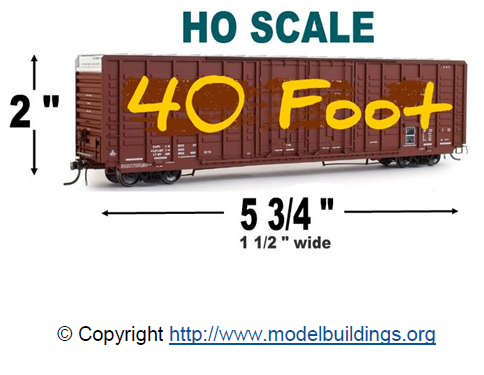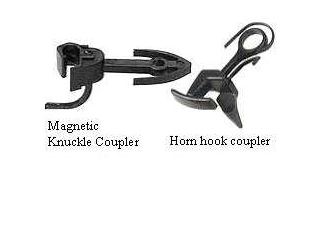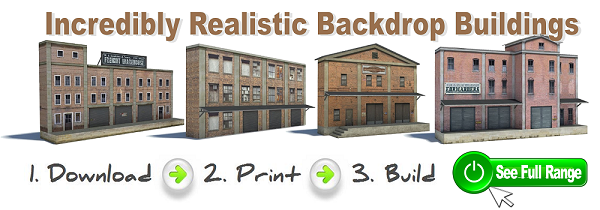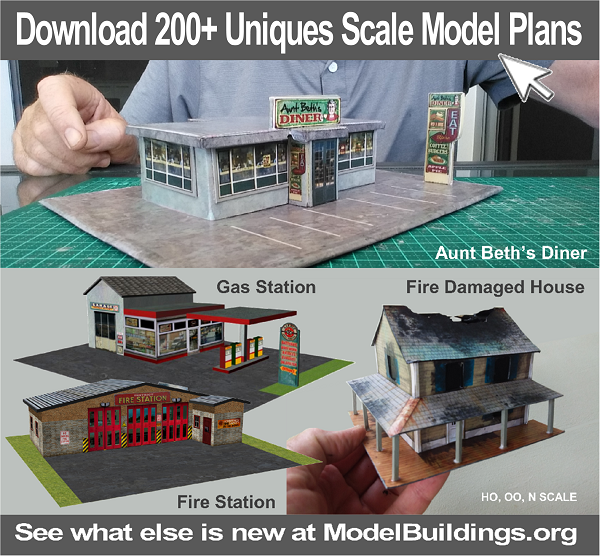Think Carefully When Buying Steam Engines or Diesel Locomotives, Rolling Stock, and Train Accessories
It’s not uncommon for the beginner to select a starter set or small individual selection of locomotive and cars based on individual preference for steam or diesel power. Childhood experience with a local railroad can play a part in the selection, particularly if the modeler can remember the period before consolidation when there were a lot of different road names around. This nostalgia has driven much product variety through the demand for a wide range of products for different eras in diverse road livery. Even at an inexpensive price point, HO scale products have been around long enough that the quality of most equipment is excellent.

Selecting Steam Engines or Diesel Locomotives
Even before selecting a scale to model, most hobbyists will make a choice of whether to focus on steam power or diesel power. Steam engines are complex machines and lend themselves well to fine scale details and are interesting to watch in operation because of the variety of motions they employ. There is probably nothing more dramatic in all of railroading than a steam locomotive passing by on a snow covered crystal clear winter day. The contrast of steam, blue sky, black smoke, and white snow personify the brute power of the steam era. Steam engines are very nearly alive. They breath, they need special and regular care, they eat and drink prodigious quantities of fuel and water, and like some people, can be exceptionally cantankerous. © Copyright http://www.modelbuildings.org All rights reserved.
On the other hand, who can resist the elegance and style of a post-war streamlined passenger train streaking through the countryside? The early diesel era offers a huge variety of different locomotive types and sizes that go about their business with a minimum of fuss and a smooth hum of reliable power. The transition era when railroads used both kinds of power offers wonderful contrasts between the old and new, much as the architectural style was radically changing as new technology made skyscrapers possible. Rolling stock for HO scale is available for practically any era you may choose to model, limited only by your imagination and the story of your own railroad!
Buying Rolling Stock and Model Train Accessories
The price range for rolling stock ranges from very inexpensive to truly ridiculous. Train shows and eBay can offer many bargains for if you take the time to decide what pieces you might want to acquire. Locomotives can be found for $25 and up, although you should expect to pay about $100 for a trouble-free and great running new unit. The current trend is to equip locomotives with Digital Command and Control decoders as the default configuration and many locomotives now also come with sound either as a standard feature or as an easily added option.
Although more modern equipment is now commonly equipped with scale-appearing knuckle couplers, it is still possible to find new equipment that uses the older “horn and hook” style. There is nothing wrong with the older style other than the appearance, but the two types are not compatible with each other.
The uncoupling mechanisms are also different, so if you are planning to pay attention to authenticity and realism, either look for knuckle couplers at the start, or plan on conversion as you acquire a locomotive or car that isn’t so equipped. Fortunately, the process for conversion is not complex or difficult, although some skill in the use of small tools is usually helpful. There are several manufacturers of knuckle couplers; all are purported to be compatible. Kadee has the widest range of options for conversion, and is generally viewed as the best supplier of knuckle couplers, but if you try to use a single supplier throughout your rolling stock, it shouldn’t matter too much which one you choose.

Beyond the Basic Train Set
“He plays with trains.” Ouch, that sounds condescending, doesn’t it? And it’s not really accurate if you have started thinking about what your train set would look like if you added more track, a couple of turnouts, a building here and there, a mountain and a tunnel, or a bridge. Once you get to that point it’s no longer a train set, it is an embryonic model railroad pike. Those thoughts signal that you have joined the thousands of model railroaders across the world that are not playing with toys, but creating art. It seems that most artists concentrate on one medium. Painters paint, sculptors sculpt, and woodworkers practice carpentry. A model railroader practices art in just about every medium there is. Painting backdrops, building benchwork, creating scenery, building models and electronics are all artistic skills that the typical model railroader will usually develop over the years. Far from being a person who plays with toy trains, the modeler is truly renaissance artist, a creator of miniature worlds!
Find a Home For Your Layout Setup
If you’ve read this far, there’s a good chance that you’ve been bitten by the bug and it’s fast becoming time for your dream layout to take the next step. You’ll need to find a home of some kind for your layout, no matter if it’s a small switching yard or a sprawling landscape. The luckiest modelers have an unused room, basement or attic that can be taken over permanently; would that everyone was that lucky! In more typical fashion, the 4 by 8 sheet of plywood or extruded foam will define the limits of the small world.
Shelf layouts are a possibility as well. Metal brackets for house shelving are widely available and can be pressed into use to create such a layout around the walls of nearly any room. This kind of layout is an excellent choice for modeling switching yards and point-to-point operations. They have the added attraction of being easy to work on, as everything on the layout is within easy reach. There are many shelf layouts that also feature multiple decks and complex helical track arrangements at one or both ends to reverse train direction and/or move the trains between levels.
No matter where your layout finds a home, you’ll need adequate electrical power and good lighting. Also, if your location has a concrete floor, you might want to consider carpeting or floor pads to make standing a bit less tiring. If your layout plans include a large operation where you’ll have groups of people regularly doing prototype activities on your line, a place for the off-duty operators or observers to grab a cup of coffee might also be a good idea.



